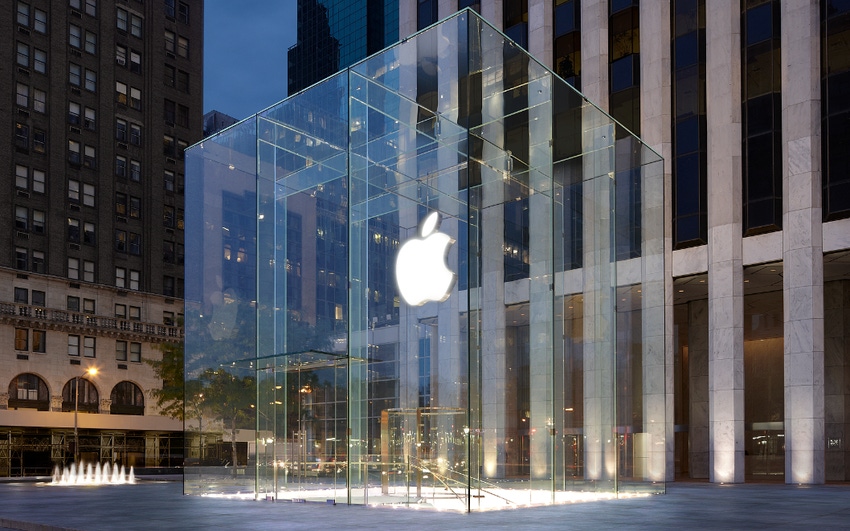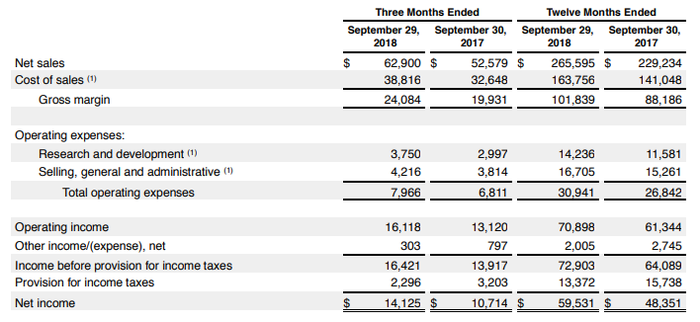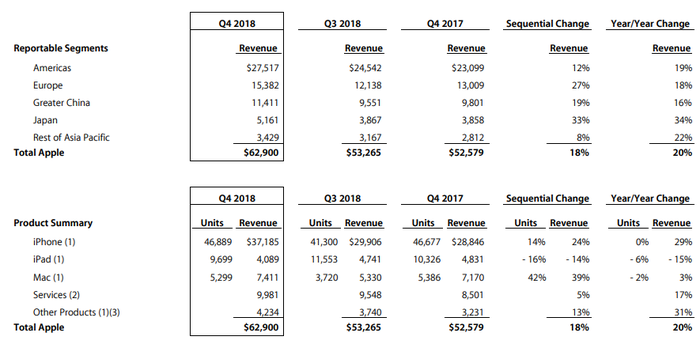Apple shares fall 5% on weak forecast
With Apple pointing the finger at fluctuating currency, poor performance in emerging markets and supply issues, its busiest quarter might not be as busy as investors had hoped.
November 2, 2018

With Apple pointing the finger at fluctuating currency, poor performance in emerging markets and supply issues, its busiest quarter might not be as busy as investors had hoped.
While CEO Tim Cook has defended the soundness of the supply chain, worries over whether the business can keep up with demand over the final quarter leading into Christmas seem to have spooked investors. Combined with warnings over performance in emerging markets as well as volatile currencies around the world, the team has stated it might miss guidance over the next three months, sending share price down 5% in afterhours trading.
“The emerging markets that we’re seeing pressure in are markets like Turkey, India, Brazil, Russia,” said Cook. “These are markets where currencies have weakened over the recent period. In some cases, that resulted in us raising prices and those markets are not growing the way we would like to see.”
India should be seen as quite a worry for the iChief’s as while the country has been undergoing its own digital revolution over the last 18 months, Apple seem to be missing out on the biggest rewards. With India now being the second-largest smartphone market in the world, but with half the penetration of China, the opportunities are clear. Despite attention from Apple, it’s opening new production facilities and shops across the country, according to data from Canalys it is yet to break into the top-five smartphone brands.
Shipments in India across the most recent quarter dropped by 1%, though Xiaomi grew 31.5% year-on-year to claim the number on spot, at the expense of Samsung, where shipments dropped 1.6%. Vivo, Oppo and Micromax complete the top five, while the ‘others’ saw shipments decrease 34%. The Chinese brands seem to have found the right recipe to appeal to the Indian user, while Apple is still searching for the sweet spot.
“To give you a perspective in of some detail, our business in India in Q4 was flat,” said Cook. “Obviously, we would like to see that be a huge growth. Brazil was down somewhat compared to the previous year. And so I think, or at least the way that I see these, is each one of the emerging markets has a bit of a different story, and I don’t see it as some sort of issue that is common between those for the most part.”
One market where this isn’t the case is China, with the business growing 16% year-on-year. On the money side of things, it certainly is a different story. Total revenues across the business grew to $62 billion, an increase of 20% over the same period in 2017, though guidance is not as positive. Cook expects Apple to pocket between $89 billion and $93 billion over the next three months, though Wall Street has generally been hoping $93 billion would be the bottom end of the guidance.
Looking at the explanation, CFO Luca Maestri has pointed to four areas. Firstly, the team have launched products in reverse order compared to last year. Secondly, with many international currencies depreciating against the US dollar, Maestri anticipates a $2 billion headwind as a result. Thirdly, due to the number of products Apple has pumped into the market, the team is nervous about supply/demand. And finally, at the macroeconomic level in some emerging markets consumer confidence is not as high as it was 12 months ago.
Heading back to the positives, Apple is making more money now than it was a year ago. Despite there being no shipment growth in any of the major product lines (iPhone was flat year-on-year, iPad was down 6% and Mac was down 2%), Apple is still a money making machine. iPhone revenue increased 29% thanks to ridiculously high unit costs, while the services business was up 17%. This is an area which will be of significant interest to investors, as there is only so much Cook and co. can increase the price of iPhones to compensate for flat growth.
As part of the services division, the App Store has been trundling along positively, though with companies like Netflix and Fortnite stating they would be circumnavigating both the App Store and Google Play, all involved will hope this does not encourage others to do the same. Cook pointed out that the largest developer only account for 0.3% of revenues at the App Store, losing one or two won’t matter, but if the trend spreads too far the product might find troubling times ahead.
Overall, Apple is still in an incredibly dominant position, though the inability to capitalise on opportunities in the developing markets should be a slight worry.


About the Author(s)
You May Also Like








.png?width=300&auto=webp&quality=80&disable=upscale)


_1.jpg?width=300&auto=webp&quality=80&disable=upscale)


.png?width=800&auto=webp&quality=80&disable=upscale)